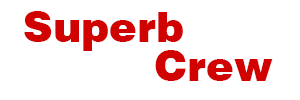Below is our recent interview with Mark Price, CEO at Firewire Surfboards:

Q: How did you come up to the idea for Firewire?
A: Firewire’s beginning in 2005 was the classic story of a disruptive technology brought to market. Bert Berger, a talented, small scale surfboard builder in Western Australia. was determined to build a lighter surfboard with controlled flex, that was also stronger than traditional surfboards. Generally speaking, when building traditional surfboards with a center ‘stringer’, a narrow strip of wood running nose to tail down the center of the surfboard for added strength, lighter means less durability.
Bert radically changed the raw materials mix and construction methods, creating the original technology called Future Shape and he then partnered with a group of like-minded individuals, myself included, who also wanted to revolutionize the modern surfboard. Firewire was created to commercialize the new technology at scale. We’ve subsequently built on that foundation of innovation and expanded our tech offering to include Timbertek, Linear Flex Technology (LFT) and most recently, and update on Future Shape called Helium.
Q: Tell us more about Helium Technology. How is it different from FST?
A: Both FST and Helium involve a process called sandwich construction, which enables us to literally sandwich an ultra-light foam core without any structural integrity, between a top and bottom 3mm aerospace deck skin that creates compression strength, and the resultant assembly is lighter than traditional surfboards.
In addition, both FST and Helium have a band of wood around the perimeter of the surfboard which creates additional strength and optimizes the flex characteristics. For over 10 years we looked for a similar material to the FST deck skin what was already white and UV stable because the grey-colored FST skins required a lot of paint to make them white, and that adds unnecessary weight.
We finally found it and by removing the paint, Helium offers all of the structural benefits of FST, but with an added saving of around 250 grams in a 30-liter board. When you consider that the FST version of that board would weigh around 2,600 grams, that’s noticeable. Plus, we’ve reduced the overall CO2 footprint by eliminating the paint.
Q: You’ve conducted a performance test with 4 identical boards using different technologies; what did you find out?
A: We built our 3 technologies (this was before Helium) and a traditional surfboard in the exact same model and placed sensors throughout the boards to measure a bunch of performance characteristics. It was immediately apparent that the acceleration through turns, and the reduced turning radius were amplified by controlled flex versus a stiffer conventional surfboard. This makes perfect sense when you consider how flex enhances the performance of snowboards, skateboards and parabolic skis. The difficulty with surfboards is building a light-weight structure that also floats.
Q: How would you convince the reader to start using your boards?
A: Ride one! Borrow a friends or lookout for our demos. The fact that we’ve enjoyed double digit growth since inception 12 years ago, even during the GFC, indicates to me that our existing customers are sticking with our technology once they start riding it, and new customers are coming onboard.
Q: What type of customer would benefit the most from your products?
A: While it’s possible to make a surfboard too light and thereby lose down-the-line drive, especially in high wind conditions, short of that I’d argue that all surfers benefit from riding lighter surfboards with controlled flex. And in particular, when it comes to the overall life span of your surfboard and its resale value, the demonstrably higher deck compression strength of our technologies will serve you well.
Recommended: Cascade Strategy – Helps You Create Your Plan, Cascade It To Your People, And Then Execute Your Goals And Projects
Q: Where is Firewire headed?
A: I think that our mission statement sums that up pretty well. “Firewire is dedicated to building high performance surfboards and accessories through innovative design, materials and construction methods. We strive to do so with the lowest possible impact on the environment while also giving back to the global surf community through support of various environmental and humanitarian organizations”.
Whether constantly pushing surfboard technology forward, or our commitment to ever increasing sustainability, we’re as passionate about Firewire’s future as when we started. We are currently the only global surfboard manufacturer with 100% Ecoboard certification and we have been since 2014, and we’re headed to zero landfill by 2020 if not sooner. On that last point, we’ve already reduced our waste per board by 95% over the past 2 years through some innovative upcycling. In addition, our factory will be Fair Trade certified by early 2019, and we will continue our support of various humanitarian and environmental organizations.
Activate Social Media:


 Recommended:
Recommended: 